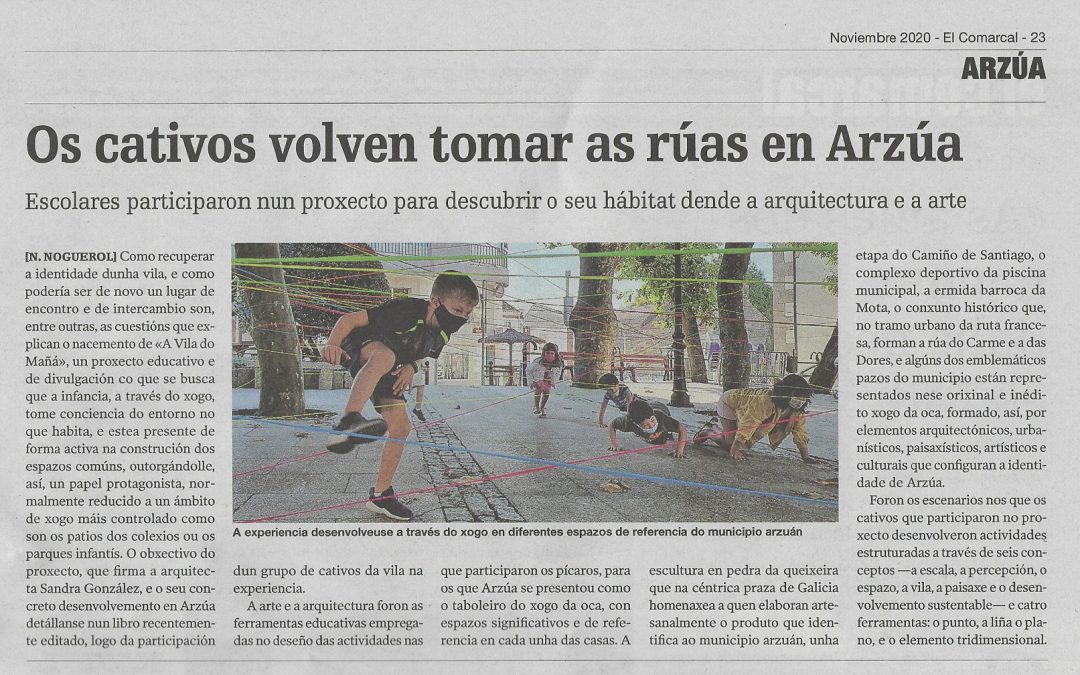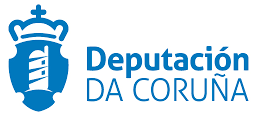El Comacal (La Voz de Galicia) 26/11/2020 “Schoolchildren participated in a project to discover their habitat through architecture and art”
“How to recover the identity of a town, and how it could be again a place of meeting and exchange are, among others, the questions that explain the birth of ‘A Vila do Mañá’, an educational project whose goal is to promote, through game, children and teenagers´ awareness of the environment in which they live, and actively witness the processes of common space’s construction, thus giving them a leading role, usually reduced to a more controlled play environment such as playgrounds. The aim of the project, signed by the architect Sandra González, and its specific development in Arzúa are detailed in a recently published book, after the participation of a group of children from the town in the experience. Educational tools used in the design of the activities in which the children participated, for which Arzúa presented itself as a “xogo da oca” gameboard, with significant spaces and of reference in each of the boxes. The stone sculpture of the cheesmaker that in the central square of Galicia pays tribute to those who craft the product that identifies the municipality of Arzua, a stage of the Camino de Santiago, the sports complex of the municipal swimming pool, the baroque hermitage of A Mota, the historic complex that, in the urban section of the French route, they form the Carmen and Dolores streets, and some emblematic palaces of the municipality are represented in that original and unpublished “xogo da oca”, formed, thus, by architectonic, urbanistic, landscaping, artistic and cultural elements that form the identity of Arzúa. They were the scenarios in which the children who participated in the project developed activities structured through six concepts -scale, perception, space, town, landscape and sustainable development- and four tools: the point, the line, the plane, and the three-dimensional element.“



